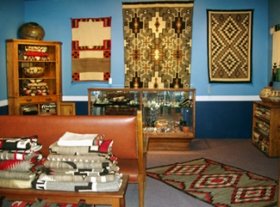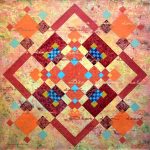Ethnic style
The interior in the ethnic style forms unique signs of the cultures of other peoples, mostly interior elements are made of natural materials; Its aesthetics form clay or wooden accessories, rough textiles, etc. Ethnic style in the house provides for the creation of an environment using the national color, characteristic of the traditions of a particular people, of a particular culture. Another, an indispensable attribute of this style are wicker furniture and textured surfaces.
Therefore, for example, the Mediterranean design with its juicy colors, the abundance of smalt and ceramics, shiny gilded accessories and woven draperies can also be called ethnical as Japanese minimalism or Scandinavian naturalness, German pragmatism or Indian “fairy tale”.

Signs of style
To create a fabulous mood of Arab culture, it is enough to take advantage of accessories – numerous pillows and rollers, decorated with brushes, embroidery and beads, carpet with oriental patterns; Jugs with a high narrow neck, covered with chased patterns. A small octagonal table with inlaid or carved, hookah, silk and brocade on the walls and windows will help you in creating the right mood. The main thing is not to overdo it with details.

Unlike the asceticism of the Japanese tradition, the Chinese more fully use the internal space of the premises – niches, arches, cabinets. There are many cabinets that were and are simple household items.
Japanese housing is the realm of space, air and light. The interior is based on several principles. The first principle – straight angles and straight lines create that very calm space and freedom of circulation of air, light and thought.


The successful choice of works of art for residence, where a certain ethnic theme predominates, depends on your taste and culture direction. Choosing a decor for ethnic style is not difficult, because the interior itself “tells” what is needed for your home. Our gallery has a very large range of works of art of ethnic origin. This is the work of the artist Anna Potrivayeva, the artist performs Japanese engravings of the XVII-XVIII centuries in the art quilting technique, creating a tsuzur-nishiky (scrap of scraps).
Decorative handmade dolls, masters of Lyudmila Grubal and wood carving by Yuri Dyachenko, handmade tapestry of the national artist of Ukraine Stepan and Lyudmila Dzhus will become a valuable interior decoration in the Ukrainian ethno-style. Also, the great cultural aesthetics of filling the ceramic reliefs of Magdalena Puglik-Belen and paintings-embroidery silk by Irina Muralevich. Among the paintings worth noting are the magnificent landscapes of the Ukrainian Carpathians Vasily Brenzovich and the mysterious world of the surrealist Igor Paneikо.










